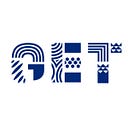Two-Teacher System, the New Model for the Education Training Market in China?
Two-Teacher System, definitely one of the buzzwords in 2016 in EdTech China market, is essentially a blended learning model combining the online lecturing teacher and local assistant teacher. It has been prevailing in many offline training sectors in China: K12 tutoring, English language training, and professional skill trail (especially IT training).
The original format of offline training was 1-to-Many Model, namely, there will be one teacher in a big lecture hall delivering sessions to more than 30 people, sometimes even over 100. This offline format was transitioned to online in 2010. 1-to-1 training started to shine since 2013 with the soaring growth of online English training companies such as iTutorGroup and 51Talk. And 2016 has witnessed a rapid growth in online 1-to-1 tutoring.
The business models in online and offline tutoring and training sectors in China never stopped innovating. Since 2016, the Two-Teacher System seemed to rise and attract a lot of attention, in a format of combining the online and offline learning experiences.
How Does the Two-Teacher System Work?
First, there will be one lecturing teacher. This teacher is usually a senior lecturer, a very famous teacher, or an expert in his/her field, who will be delivering the lecture online via live-streaming. In this way, this senior (and usually very expensive) teacher could live stream the session to many classrooms, in many cities, at the same time, which could extensively reduce the costs of teaching staff and solve the problem of lack of experienced teacher in some cutting-edge technology sector, e.g. AI or VR.
There will also be one assistant teacher, maybe not so senior or qualified, in present in the class. He/She will be attending the students (for K12 classes) to make sure everyone is focused and engaged, interacting with students, answering basic questions, marking the assignment and homework, and collecting feedback.
What the Industry Chain Look Like?
Let’s take the K12 tutoring industry as an example. There are mainly four elements in this industry chain (in upstream-to-downstream order):
1.The content providers, who offer the Two-Teacher System comprehensive solutions, including curriculum design, teaching materials, textbooks, LMS and teacher training services. For example, GaosiEdu (who has applied to be listed on the New Third Board), Aotu Personalized Education, Genshuixue, etc.
2.Equipment suppliers, who will provide the teaching tools and live streaming equipment. More specifically, on the lecturing teacher’s side, there are the cameras and microphones that facilitate the teacher to live stream. On the students’ side, there are the big screens which display the live-streaming lectures, microphones, and the remote answering controller (students could participate interactive Q&A with the lecturing teachers to provide instant student learning feedback). And on top of this, there is also the essential software to ensure the quality of the live streaming videos. An example company is VDYOO, etc.
3.Training centres, who will provide the physical location and assistant teachers, as well as recruit the students. For example, the biggest K12 tutoring companies in China, New Oriental and TAL Education Group, have adopted the Two-Teacher Model since 2015.
4.Finally, the end users — students.
The Business Model
The very first company in China who started to use the Two-Teacher System is Terena, a leading professional skill education provider with a core strength in IT training in the 2000s. However, It’s the New Oriental and TAL Education who have pushed this concept to a larger scale.
Where does the revenue go? Let’s take the K12 tutoring content provider, Aotu’s accounting at the end of 2016 as an example. Auto, as the content provider, will get 25% of the total revenue while 45% will go to the offline franchise training facilities, 20% to the senior/famous lecturing teachers and 10% to the assistant teachers.
From the perspective of the costs, this Model has to some extent resolves the issue of lack of qualified lecturing teaching and the costs on staff. It also helps the large tutoring companies to expand from 1st and 2nd tier cities to the 3rd and 4th tier cities where there are a great demand but a lack of quality teaching resources. On the other hand, this model still has the same problem as the traditional offline tutoring companies where the majority of the cost will go to student recruitment.
Another takeaway of this Model is to solve the allocation inequality of education resources problem. In China 2013, the public education system has collaborated the Chinese Normal University to adopt the “online lecturing teacher + local assistant teacher” model in rural areas in more than 5 provinces in China, which has preliminarily proven the effectiveness of this teaching model.
What do you think of the Two-Teacher System? Let us know your opinions in the comments section below, or simply drop us a line at Global@JMDedu.com
